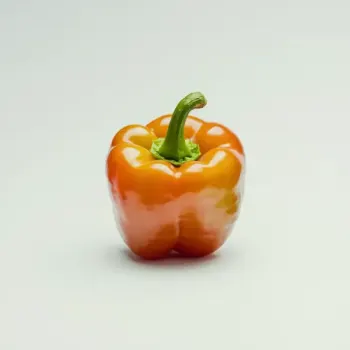Pepper and paprika are distinct spices used in cooking. Pepper, from peppercorns, provides a sharp, spicy heat. Paprika, from dried red peppers, varies from sweet to smoky. They elevate meat, vegetable dishes, soups, and stews, but aren't directly substitutable due to different flavor profiles.

Pepper, often referred to as black pepper, is the fruit of the Piper nigrum plant. It's known for its sharp, spicy flavor that can add heat and depth to dishes.

Paprika is a ground spice made from dried red peppers, ranging from sweet to hot varieties. Its flavor profile can vary from mild and sweet to smoky and pungent.
The primary differences lie in their origins, with pepper coming from peppercorns and paprika from bell peppers or chili peppers. Their flavors also differ; pepper delivers a sharp heat, while paprika offers a range of tastes from sweet to smoky. Texturally, pepper provides a gritty bite, and paprika a smooth touch.

Your ultimate Recipe Box, Meal Planner, and Cooking Class all in one
Best used in steak au poivre, barbecued meats, and marinades. Pepper adds a sharp, penetrating flavor and creates a well-rounded heat. Tip: Crack fresh pepper over meat dishes after cooking to preserve its pungent aroma. Ideal in goulash, chicken paprikash, and rubbed on meats. Paprika imparts a warm, complex flavor and vibrant color. Tip: For a smoky note, opt for smoked paprika in your rubs.
Great for grilled vegetables, stir-fries, and salads. Pepper can enhance the natural flavors of vegetables and bring a zesty kick. Tip: Use freshly ground pepper to finish a dish and keep the flavors bold. Works well in ratatouille, roasted vegetables, and vegetable stews. Paprika can sweeten or add smokiness to the vegetables depending on the variety used. Tip: Sprinkle paprika over vegetables before roasting to deepen the flavor.
Essential in soups like tomato soup, beef stew, and chowders. Pepper can cut through the richness and add a layer of flavor. Tip: Add pepper during cooking to infuse the soup with its heat. Key in dishes like Hungarian goulash, lentil soup, and creamy stews. Paprika adds depth and warmth without overwhelming the other ingredients. Tip: Stir in paprika early in cooking to fully release its color and flavor.
Pepper is rich in antioxidants, while paprika is high in vitamins A and E.
| Nutrient | Pepper ( per Teaspoon ) | Paprika ( per Teaspoon ) |
|---|---|---|
| Fat | 0.1g | 0.9g |
| Protein | 0.2g | 0.9g |
| Calories | 5.4 | 19 |
| Vitamin A | 0IU | 1473IU |
| Vitamin E | 0.1mg | 2mg |
| Carbohydrates | 1.4g | 3.7g |
No, paprika is milder than black pepper and often adds a different flavor profile, so it won't achieve the same level of heat.
While no paprika is identical to black pepper, hot paprika can offer a similar heat level but with a distinct taste.
Due to their unique flavors and heat levels, they are not directly interchangeable. The choice of spice should be based on the desired flavor outcome.
Yes, sweet paprika can add color to dishes with minimal impact on the overall flavor profile.
Both spices offer health benefits: pepper aids digestion, while paprika is a good source of vitamins A and E.